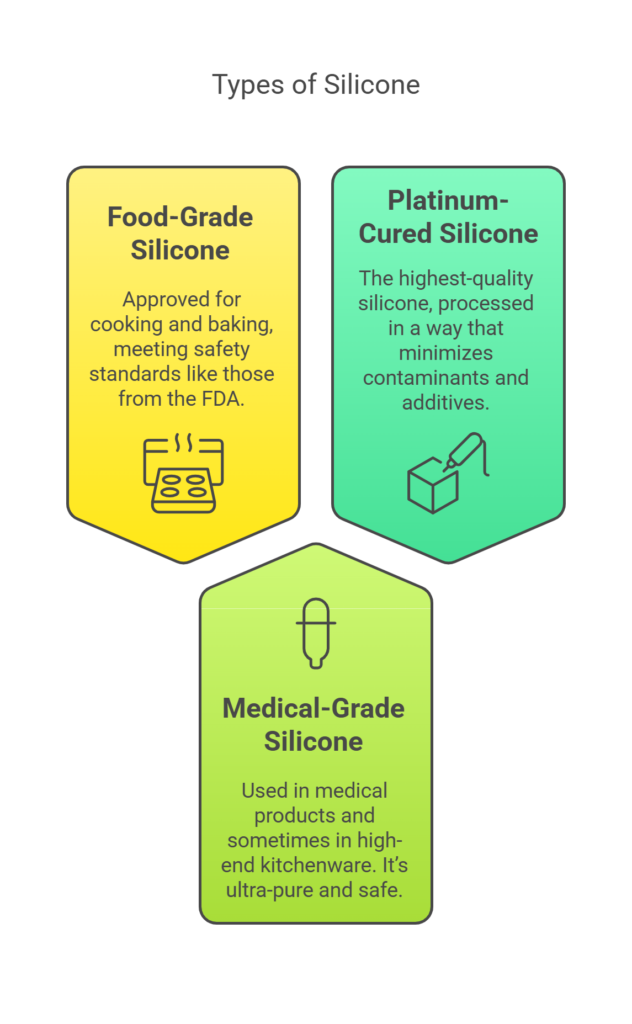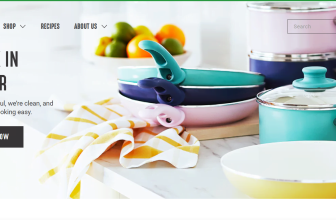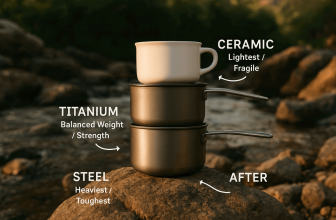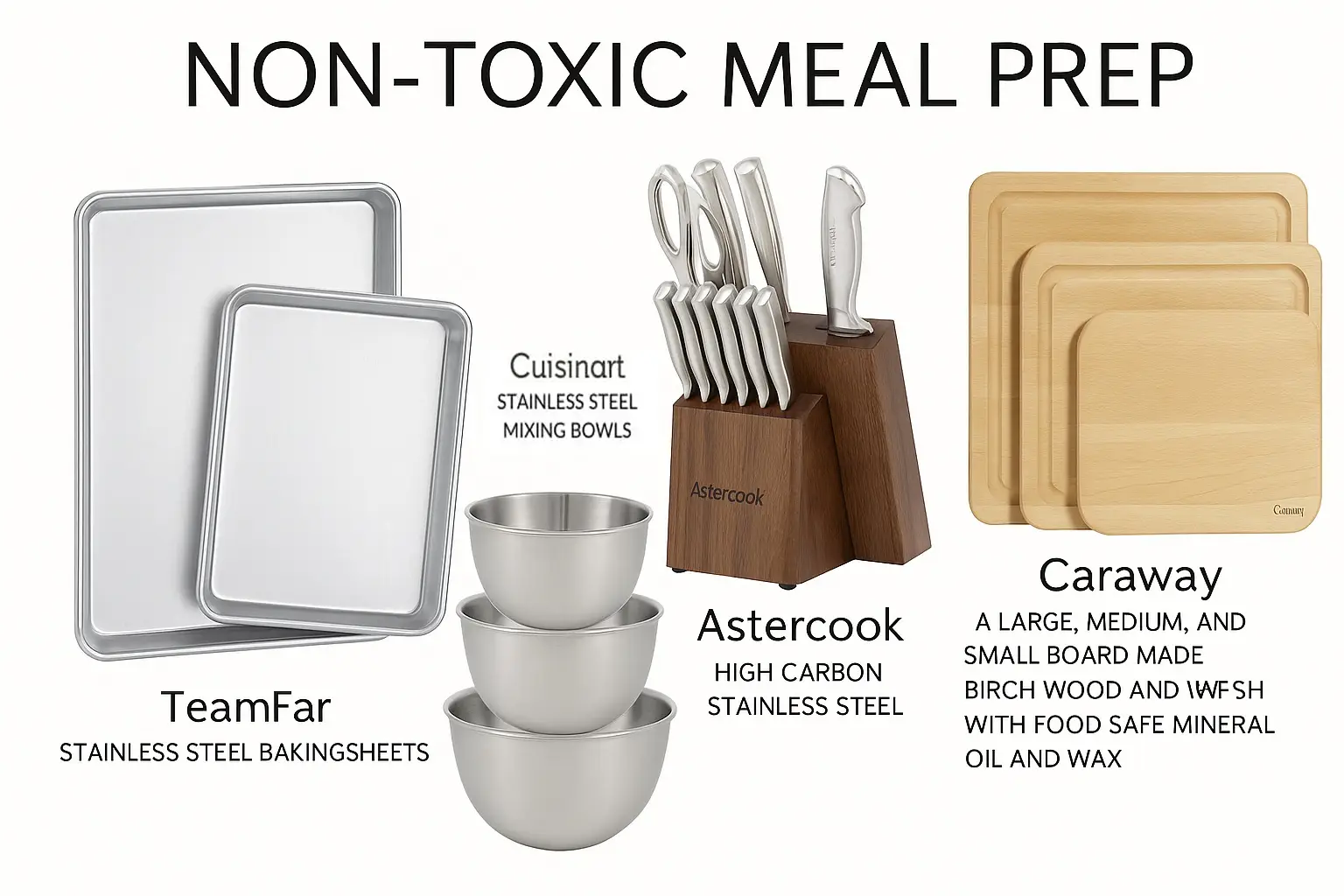How To Choose Safe Non-Toxic Silicone Cooking Utensils In 2025
Silicone cooking utensils have become a kitchen staple. They’re flexible, heat-resistant, and easy to clean—what’s not to love? But with growing concerns about toxins in cookware, you might be wondering: Are silicone utensils actually safe? Do they leach chemicals? Can they absorb food odors?
The short answer? High-quality silicone is considered safe. But there’s more to it than just grabbing the first silicone spatula you see. Let’s dive into the details, so you can confidently choose the best kitchen tools for your home.
What Are Silicone Cooking Utensils?
Silicone is a rubber-like material made from silicon (a natural element) combined with oxygen, carbon, and hydrogen. Unlike plastic, it doesn’t break down easily when exposed to heat, making it a popular choice for kitchen tools like spatulas, baking mats, and even ice cube trays.
Types of Silicone Used in Kitchen Tools
Not all silicone is created equal! Here’s what you should look for:

If you want the safest option, go for platinum-cured, food-grade silicone from a reputable brand.
 Are Silicone Cooking Utensils Safe?
Are Silicone Cooking Utensils Safe?
The big question! Here’s what you need to know:
Heat Resistance of Silicone
Most silicone utensils can handle temperatures between 400°F to 600°F, which is more than enough for cooking and baking. However, if you accidentally leave a silicone spatula in a frying pan on high heat, it could degrade, releasing unwanted substances.
Does Silicone Release Chemicals?
High-quality silicone doesn’t leach harmful chemicals under normal cooking conditions. The problem arises with low-quality silicone, which may contain plastic fillers. These fillers can break down and contaminate your food when exposed to high heat.
How do you avoid this? Do a simple bend test! If you pinch or bend your silicone utensil and see white streaks, it likely contains fillers and isn’t pure silicone.
How to Choose Safe, Non-Toxic Silicone Utensils
- Look for FDA-approved or LFGB-certified silicone.
- Choose platinum-cured silicone to avoid unwanted additives.
- Avoid cheap, unbranded silicone, as it may contain plastic fillers.
- Read reviews! Other home cooks often share their experiences with different brands.
Common Problems with Silicone Cooking Utensils
Silicone is generally safe, but it’s not perfect. Here are some issues people have noticed:
Does Silicone Hold Odors and Flavors?
Some people swear their silicone utensils absorb smells—especially strong ones like garlic or dish soap. Others say they don’t notice a thing. If you’re sensitive to smells, you might experience this issue more than others.
How to Clean and Maintain Silicone Utensils
If your silicone spatula smells like last night’s stir-fry, try these fixes:
- Hand wash with mild soap to avoid detergent buildup.
- Boil in water with vinegar for 10-15 minutes to remove stubborn odors.
- Bake at 250°F for 30-60 minutes to eliminate trapped smells.
- Avoid scented dish soap, which can cling to silicone.
Taking care of your silicone utensils properly will keep them fresh and long-lasting.
Alternatives to Silicone Cooking Utensils
If you’re still unsure about silicone, here are some great non-toxic alternatives:
Wood and Metal Utensils
- Wooden utensils (like bamboo or teak) are all-natural and gentle on cookware, but they require more maintenance.
- Stainless steel utensils are ultra-durable and easy to clean, but they can scratch non-stick surfaces.
Parchment Paper vs. Silicone Baking Mats
- Parchment paper is disposable but may have a silicone or wax coating—check the label.
- Silicone baking mats are reusable and eco-friendly, though some people say they absorb odors over time.
Final Thoughts: Should You Use Silicone Utensils?
The verdict? Silicone utensils are safe—if you choose high-quality, food-grade products. But like anything in the kitchen, they have their pros and cons.
How to Pick Safe Silicone Kitchen Tools:
✔️ Choose FDA or LFGB-certified products.
✔️ Avoid cheap silicone that might contain plastic fillers.
✔️ Clean properly to prevent odors and make them last longer.
✔️ Try wood or stainless steel if you prefer natural materials.
If you love the flexibility and ease of silicone, stick with high-quality brands and take care of your utensils. If you’re still unsure, wooden or stainless steel utensils are always solid choices.
Conclusion
Silicone cooking utensils can be a safe, non-toxic choice when you buy from trusted brands and take proper care of them. While some people experience issues like odor retention, these can often be fixed with thorough cleaning methods.
At the end of the day, the best kitchen tools are the ones that work for you. Whether you love silicone, wood, or stainless steel, make sure to invest in high-quality, non-toxic options that keep your cooking safe and enjoyable.
Recommended Brands
Some well-known brands that make high-quality silicone cookware include:
Le Creuset Craft Series Utensil Set
Price: The set is priced between $69.99 and $87.00, depending on the chosen color.
Materials:
- Utensil Heads: Made from premium, BPA-free silicone, these heads are flexible, stain-resistant, and heat-resistant up to 482°F.
- Handles: Crafted from smooth wood, providing a comfortable grip. Note that while the silicone heads are dishwasher-safe, the wood handles require hand washing.
- Crock: Constructed from premium stoneware with a colorful, nonporous glaze that is non-reactive and resistant to chips, scratches, and stains. The stoneware is dishwasher-safe.
Notable Features:
- Heat Resistance: Silicone heads can withstand temperatures up to 482°F, making them suitable for various cooking tasks.
- Non-Abrasive: The silicone material is gentle on all cookware surfaces, including non-stick, preventing scratches.
- Ergonomic Design: Handles are designed for optimal kitchen functionality, ensuring a comfortable and secure grip during use.
- Easy Maintenance: Removable silicone heads are dishwasher-safe, while the stoneware crock is also dishwasher-safe for convenient cleaning.
Safety Standards:
- BPA-Free Silicone: Ensures that the utensils are free from harmful chemicals, making them safe for food contact.
- Non-Reactive Glaze: The stoneware crock’s glaze is nonporous and non-reactive, ensuring that it doesn’t absorb odors or flavors and is resistant to chips, scratches, and stains.
Have you noticed a smell in your silicone utensils? Or do you swear by them? Share your experience in the comments below!








